Golden Plover (Pluvialis apricaria) at St Mary’s Island, Whitley Bay, Northumberland, turn of the high tide 15th November 2018.
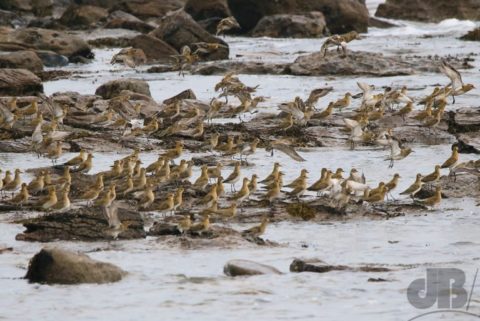
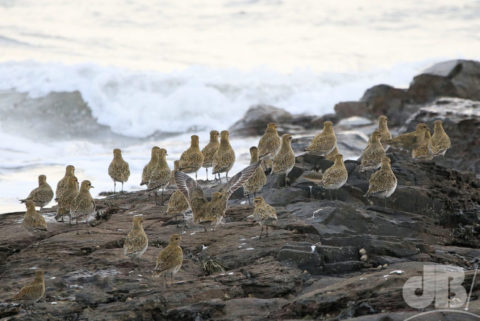
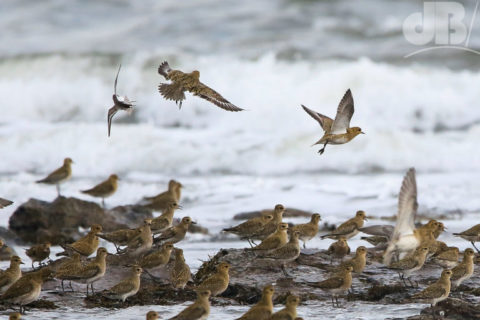
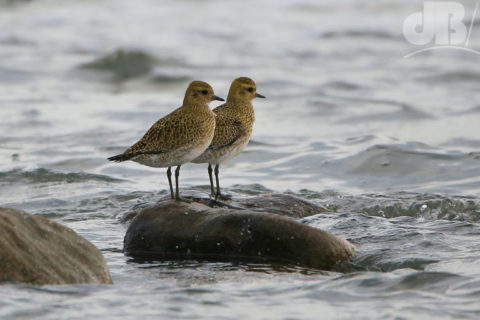
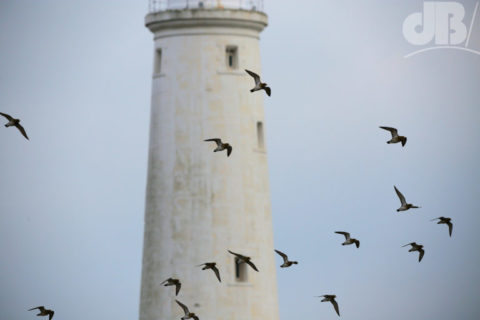
St Mary’s Island, near Whitley Bay, is a great place to see a variety of bird species. Here are some of the species that you might see on a visit:
Common Eider (Somateria mollissima) – These large sea ducks are a common sight around St Mary’s Island. The males have striking black and white plumage with a lovely green patch on the back of their heads, while the females are speckled brown.
Eurasian Oystercatcher (Haematopus ostralegus) – These black and white wading birds are commonly seen along the shore, probing the sand and mud for their favourite food – bivalves such as mussels and cockles with their large orange bill.
Turnstone (Arenaria interpres) – These small, plump wading birds are easy to spot with their distinctive black and white plumage and mottled brown plumage. They get their name from their habit of turning over stones and pebbles to find food.
Ringed Plover (Charadrius hiaticula) – These small, sandy-coloured wading birds are often seen running along the shoreline, looking for insects and other small invertebrates. Look out for another similar species Little Ringed Plover (Charadrius dubius), distinguished by yellow ring around the eyes.
European Herring Gull (Larus argentatus) – These large, noisy gulls are a common sight around St Mary’s Island. They are opportunistic feeders and will eat a variety of food, including fish, insects, and even rubbish.
Great Black-backed Gull (Larus marinus) – These are the largest gulls in the world, and are often seen patrolling the coastline. They are powerful predators and will take a wide range of prey, including fish, seabirds, and even small mammals.
Common Tern (Sterna hirundo) – These graceful birds are summer visitors to the coast, arriving in April and leaving in September. They are often seen hovering over the water, looking for fish to dive down and catch.
Northern Fulmar (Fulmarus glacialis) – These grey and white seabirds resemble gulls but have a distinctive tube-like nostril on their beaks, they’re often referred to as tubenoses. They are often seen soaring along the cliffs and offshore islands, and are known for their ability to produce an oily substance which they spit at predators in defence. Their flight pattern is with stiff-winged flapping.
Common Guillemot (Uria aalge) – These black and white seabirds are part of the auk family and are often seen in large colonies on offshore islands. Also known as the Common Murre. They have a distinctive high-pitched call and can often be seen diving underwater to catch fish.
Kittiwake (Rissa tridactyla) – These small gulls are easily recognizable by their black-tipped wings and bright yellow beaks. They are also known for their loud and distinctive “kitti-wake” call. Like other gulls, they are opportunistic feeders and will eat a variety of food including fish, invertebrates, and scraps of human food. They are known as Black-legged Kittiwakes outside the UK.
We’ve also seen Cormorant, Red Shank, Grey Heron, Dunlin, Sandpiper, Avocet, and several other species on the island. There is less chance of seeing Puffin, Shag, Gannet, but you never know…